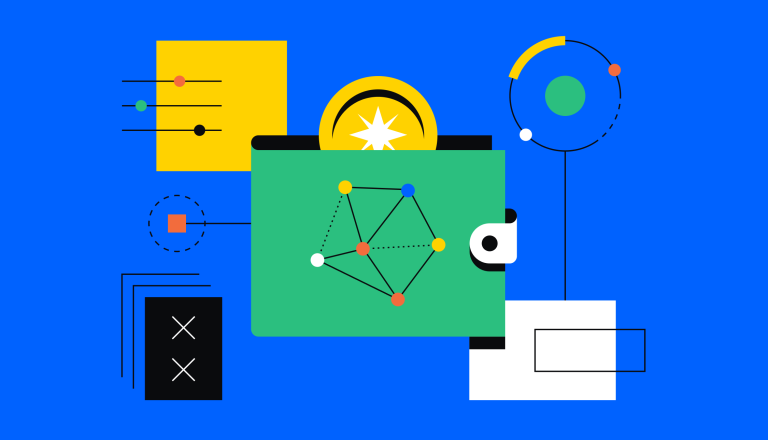How to get started in DeFi
A step-by-step guide to starting to explore the vast ecosystem of decentralized finance

If you’ve been dabbling in crypto, you’ve likely heard of decentralized finance, or DeFi. It represents one of the core promises of crypto: the ability for anyone around the world to access basic financial services with little more than a smartphone and the internet.
As it exists today, the global financial services industry is siloed and controlled by centralized financial institutions, governments and borders. That makes some basic financial services inaccessible to more than one billion people globally. For anyone with some cryptocurrencies and a crypto wallet, however, DeFi provides open alternatives to nearly every financial service we use today, from earning interest and trading to taking out loans or securing insurance. All of this happens without the need for an intermediary.
It can be a bit daunting to get started — there are hundreds of DeFi apps with varying use-cases across numerous blockchains, and thousands of coins to potentially choose from.
We’re going to walk you through the basics of the DeFi world and how to begin taking advantage of decentralization. We’ll cover what you need to get started, how to navigate to different DeFi apps, and highlight some of the most popular services the DeFi ecosystem has to offer.
Getting started
If you haven’t already done so, the first thing you’ll need to do is set up a crypto wallet compatible with DeFi apps, like Coinbase Wallet or Coinbase dapp wallet. Your wallet is your gateway into web3 and the ecosystem of dapps (decentralized applications) like DeFi apps. If you are reading this from your Coinbase dapp browser, then you are already set.
Once your wallet is set up, you’ll need to add some crypto to it. If you already have an account with Coinbase’s exchange, you can easily link it to your Coinbase Wallet to securely move your crypto from your exchange account into your wallet. Coinbase dapp wallet is located within your primary Coinbase app and provides easy in-app funding flows.
You can also transfer crypto from places other than Coinbase, using your wallet’s public address. Your wallet address can be found by tapping the QR code icon in the mobile app or browser extension.
Once your wallet is loaded with the cryptocurrencies of your choice (there are thousands of options compatible with either Coinbase product), you’re ready to navigate to your first dapp.
What's a dapp?
A dapp is a decentralized application that you access by logging in directly with your wallet.
Dapps exist across many blockchains that support smart contracts, like Ethereum, Avalanche, Polygon or the BNB Chain. Connecting your wallet to dapps is how you can, for example, earn interest, take out a crypto loan, or secure insurance against a crypto investment.
How to Access
You can easily access web3 dapps with Coinbase, through Coinbase Wallet, Coinbase Wallet extension, or dapp browser on Coinbase.
For Coinbase Wallet, you tap the middle icon on the bottom of your screen to open Wallet’s built-in web browser. You can then type in the URL of the dapp you’d like to navigate to. And if you’re using Google Chrome, you can download the Coinbase Wallet extension from the Chrome Web Store and simply connect your wallet to any dapp you navigate to.
For Coinbase, click the Browser icon on the bottom of your screen to open the built-in browser and start exploring the world of dapps.
What can you do next
The world of DeFi can get complicated quickly. Here are some popular use cases that you can start to take advantage of:
Lending: You can deposit crypto into a “lending pool,” that is then borrowed from by other crypto users who deposit their own assets as collateral. Lenders can earn interest by providing liquidity to the pool. Compound is one of the most popular lending dapps.
Borrowing: You can also use a number of dapps, like Aave or Compound, to borrow crypto against your own holdings. You simply deposit your collateral and take out a loan from one of the available lending pools.
Liquidity Providing: Since DeFi doesn’t depend on intermediaries, the capital that’s used on DeFi apps to facilitate trading is provided by other users of the platform, in the form of something called a liquidity pool. They’re essentially crowdsourced sums of pairs of cryptocurrency that are locked into a smart contract. To join a liquidity pool, you need to deposit equal parts of a trading pair, like AVAX and USDC, for example, and agree to leave it there for a certain period of time. In exchange, you’ll receive a portion of the fees generated by the trades made with that pair, in the form of a third token.
Yield Farming: Yield farming is perhaps the riskiest corner of DeFi. When liquidity providers earn tokens as rewards for providing liquidity, there are also opportunities to use those tokens as liquidity for other pools, which amplifies your returns by creating multiple channels of passive income. The most sophisticated yield farmers employ complex strategies involving moving sums of crypto between exchanges and dapps in attempts to find the highest interest rates. PancakeSwap is a popular platform for yield farming on BNB Chain.
Collateralizing an NFT: Do you own a high-value NFT that you don’t want to sell, but might want to get some liquidity out of? You can use a dapp like NFTfi to deposit an eligible NFT as collateral, and receive a peer-to-peer loan from someone willing to provide you that liquidity.
DeFi insurance: The DeFi ecosystem is still brand new, meaning it is full of potential risks that could jeopardize money you’ve deposited into an app. For example, a smart contract bug, like the infamous one that took down The DAO in 2016, could wipe out your entire investment. Platforms like Nexus Mutual can help provide some level of protection.
Common risks
Learn about the common risks with dapps.


